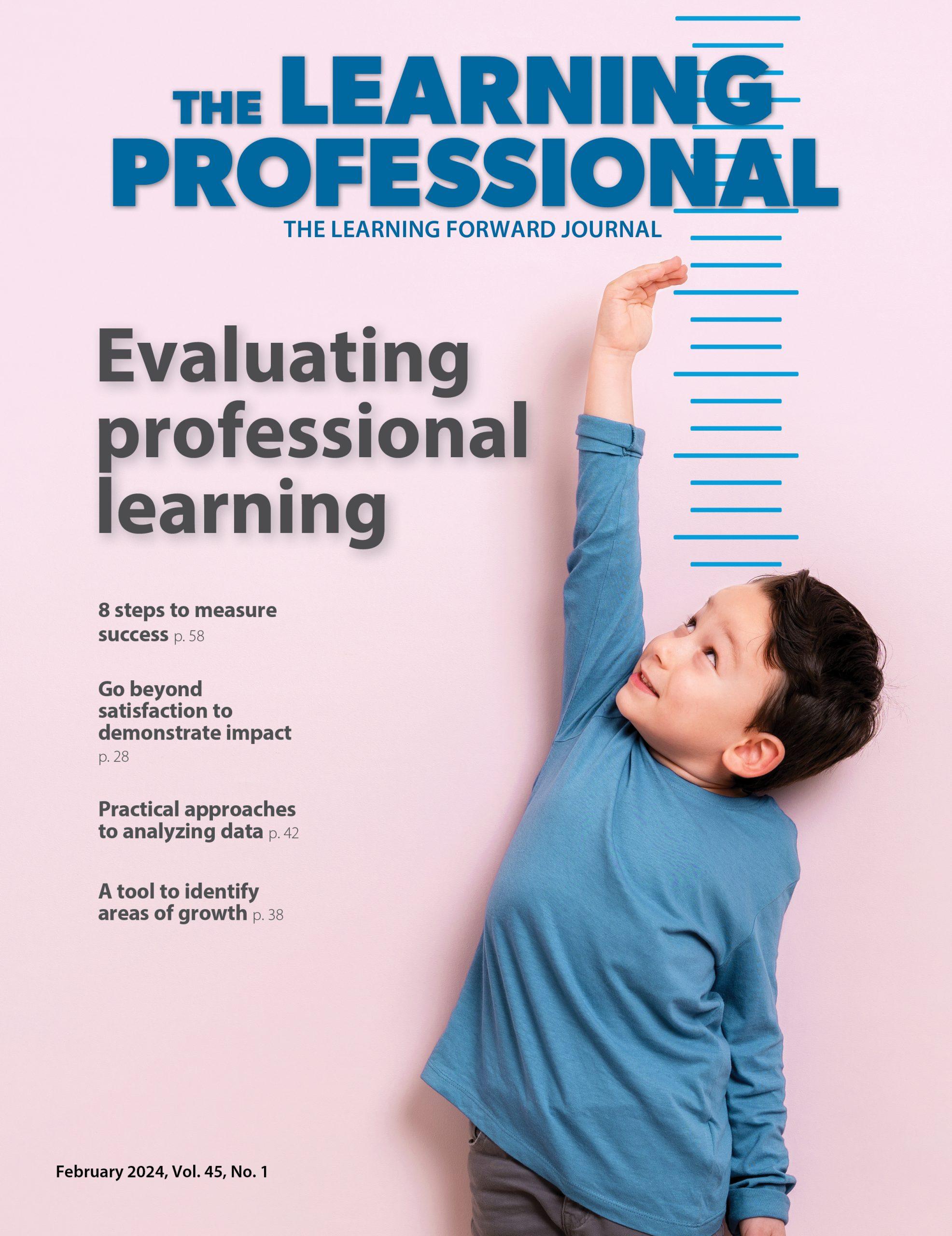How adults learn forms the foundation of the Learning Designs standard.
By Eleanor Drago-Severson
Understanding how adults learn is an essential component for shaping effective professional learning. The author illustrates how the three strands of the Learning Designs standard — apply learning theories, research,
and models; select learning designs; and promote active engagement — can lead educators to create learning experiences with maximum impact.
CYCLE OF SUCCESS: Learning sequence melds disjointed activities into a streamlined structure.
By Colleen Broderick
At Mapleton Expeditionary School for the Arts in Thornton, Colo., professional learning felt disconnected and frenetic until the leadership team created a teaching and learning cycle that connects multiple learning designs into a four-week program that defines a clear path for teacher and student learning.
IN YASIR’S SHOES: A principal gains insight by shadowing an English language learner student. By Shari Farris
Shadowing a student gives great insight into engaging and motivating English language learners toward academic success and meaningful relationships. The author offers strategies to make shadowing a purposeful and practical experience for teachers and school leaders.
In demonstration classrooms, it’s show-and-tell every day.
By Karen Grose and Jim Strachan
In Toronto’s demonstration classrooms, small groups of teachers observe a colleague in the classroom, then participate in a collaborative debriefing session with an instructional guide or the demonstration classroom teacher. Participants report improvements in practice and connections with colleagues as well as increased student learning.
A STATE FOR EXCELLENCE: New Jersey boosts learning power with online video resources.
By Victoria Duff, Wendy Sauer, and Sonia Caus Gleason
New Jersey bolsters its professional learning tool kit
with Success at the Core, an online resource that aims to strengthen leadership teams as well as offer teachers strategies for improving instruction. The program combines videos of effective classroom practices with materials that encourage analysis, reflection, and action.
TEACHING 2.0: Teams keep teachers and students plugged into technology.
By Michelle Bourgeois and Bud Hunt
The St. Vrain Valley School District in Longmont, Colo., created the Digital Learning Collaborative, a two-
year professional learning program that gives teachers an opportunity to learn how to improve instruction and increase student learning by using digital tools in the classroom.
PAUSE, REWIND, REFLECT: Video clubs throw open the classroom doors.
By Miriam Gamoran Sherin and Katherine A. Linsenmeier
By forming a video club, a group of teachers can watch and discuss excerpts of videos from their classrooms. Doing so creates common ground for discussion, provides a place for sustained reflection on classroom interaction, breaks down privacy barriers, and promotes professional community.
The authors outline the benefits of a video club as well as guidelines for creating one.
FLYING SOLO: Teachers take charge of their learning through self-study research.
By Anastasia Samaras
Teachers who want total control of their own professional development can improve their practice by following this five-step plan for self-study: Write your own question, work with a critical friends team, plan new pedagogies, document and assess your research, and share what you’ve learned. Teacher Libbie Edwards illustrates her own self-study research project.
GRASSROOTS GROWTH: The evolution of a teacher study group.
By Dana Maloney, Terry Moore, and Monica Taylor
A teacher study group in Tenafly, N.J., that began as a grassroots professional learning community revitalizes
its members, strengthening their commitment to social responsibility and helping them grow as leaders within and beyond their school district. The authors describe the group’s format and process and offer strategies for forming a teacher study group.
Learning Forward is the only professional association devoted exclusively to those who work in educator professional development. We help our members plan, implement, and measure high-quality professional learning so they can achieve success with their systems, schools, and students.
Recent Issues
LEARNING TO PIVOT
August 2024
Sometimes new information and situations call for major change. This issue...
GLOBAL PERSPECTIVES
June 2024
What does professional learning look like around the world? This issue...
WHERE TECHNOLOGY CAN TAKE US
April 2024
Technology is both a topic and a tool for professional learning. This...
EVALUATING PROFESSIONAL LEARNING
February 2024
How do you know your professional learning is working? This issue digs...








